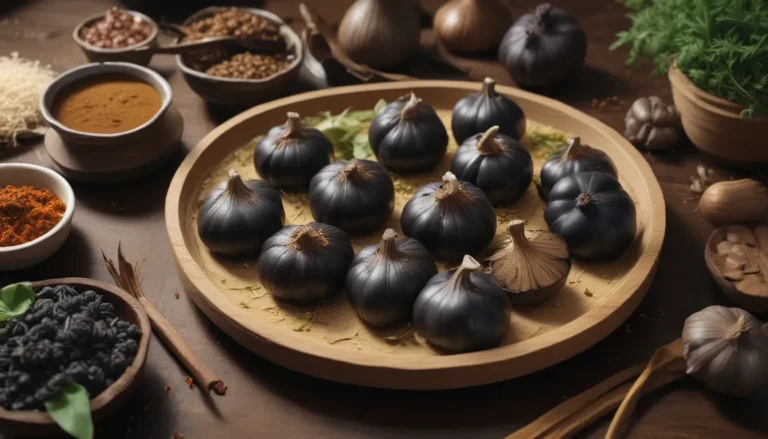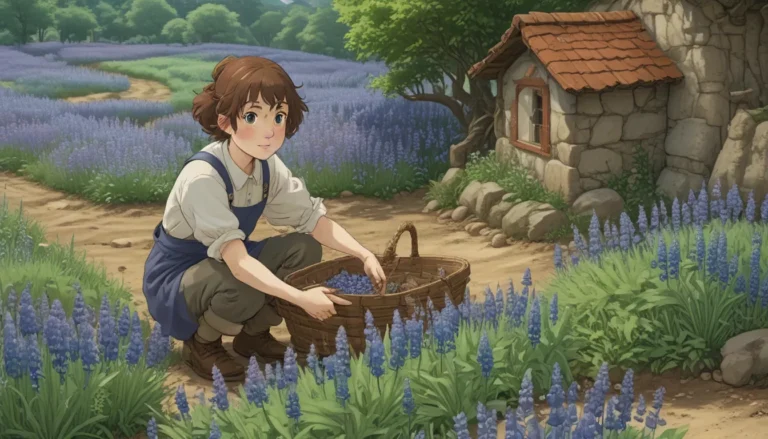A Comprehensive Guide to Growing Mandrake: Cultivation, Propagation, and More

Are you fascinated by the allure of mandrake root, known for its mystical and medicinal properties? Mandragora, a perennial herb belonging to the nightshade family, is a plant that requires patience and dedication to cultivate. From the forked taproot resembling the human form to the toxic tropane alkaloids present in all species, mandrake is a plant shrouded in mystery and intrigue.
In this in-depth guide, we will explore the cultivation and history of mandrake, its propagation methods, growing tips, maintenance, and more. Whether you are a seasoned gardener or a curious enthusiast, this article will provide valuable insights into growing this rare and enchanting plant in your garden. So, let’s dive in and uncover the secrets of growing mandrake!
What You’ll Learn
- Cultivation and History
- Propagation
- How to Grow
- Growing Tips
- Maintenance
- Where to Buy
- Managing Pests and Disease
- Best Uses
- Quick Reference Growing Guide
Cultivation and History
Mandragora species, such as M. officinarum and M. autumnalis, are known for their toxic alkaloids and distinctive features, including the human-like taproot and rosette of leaves. These plants have a rich history dating back to ancient texts like the Book of Genesis and Greek mythology.
Native to southern Europe, Iran, and parts of Asia, mandrake has been used in herbal medicine and magical practices for centuries. While its toxic properties make it dangerous if ingested, the plant’s historical significance and mythical associations have captured the imagination of many.
In modern times, mandrake is a rare find in most gardens but can be seen in specialized collections like the poison garden at Alnwick in the UK. Its unique appearance and cultural symbolism make it a captivating addition to any garden, especially those with a magical or gothic theme.
Propagation
From Seed
Growing mandrake from seed requires patience and specific conditions for successful germination. Whether starting with fresh or dried seeds, cold stratification is necessary to break dormancy and stimulate growth. Planting seeds outdoors or in containers with well-draining soil and adequate light will support healthy seedling development.
From Root Divisions
Root cuttings are an alternative method for propagating mandrake, especially for established plants. By carefully dividing the roots of mature specimens and replanting them in suitable soil, you can create new plants without relying on seeds. Root divisions should be performed with caution to avoid damaging the plant and ensure successful propagation.
From Seedlings/Transplanting
Transplanting seedlings or root cuttings into permanent growing locations requires careful consideration of soil conditions, light exposure, and spacing. Whether growing mandrake in containers or in the ground, providing the right environment for these plants to thrive is essential for their long-term health and development.
How to Grow
Mandragora thrives in Zones 6 to 8, preferring alkaline to neutral soil with good drainage and full sun exposure. Active growth occurs in late winter, followed by dormancy in the summer. Regular watering, occasional feeding with compost, and proper spacing are key factors in successful mandrake cultivation.
Growing Tips
- Plant mandrake in areas away from children and pets, as all parts of the plant are toxic.
- Use well-drained sandy soil and amend with organic matter for optimal growth.
- Feed plants annually with compost to support healthy development.
Maintenance
Maintaining mandrake plants involves thinning stands to prevent overcrowding, dividing roots every few years, and removing dead foliage to promote new growth. Regular inspection for pests and diseases, such as slugs, snails, and root rot, is important for keeping plants healthy and vibrant.
Where to Buy
Finding mandrake seeds or starts can be challenging, but local nurseries, plant societies, and herbal apothecaries may offer these rare plants. If you have access to established mandrake specimens, collecting fruits for seed propagation is a cost-effective way to grow new plants in your garden.
Managing Pests and Disease
While mandrake is relatively pest-resistant, common garden pests like slugs and snails can cause damage if left unchecked. Organic control methods, such as handpicking pests and creating deterrents, can help protect plants from infestations. Preventing root rot through proper soil drainage and watering practices is essential for maintaining plant health.
Best Uses
Mandragora’s mystical allure makes it a captivating addition to magical and gothic gardens. Its historical significance, toxic properties, and ornamental appeal make it a popular choice for themed plantings. By incorporating mandrake into your garden design, you can create a unique and enchanting landscape that sparks curiosity and fascination.
In conclusion, growing mandrake is a rewarding experience that combines history, folklore, and horticulture in a single plant. By following the tips and guidelines provided in this guide, you can cultivate mandrake successfully and enjoy its magical presence in your garden. If you have any stories or insights to share about growing mandrake, feel free to leave a comment below. Happy gardening!





